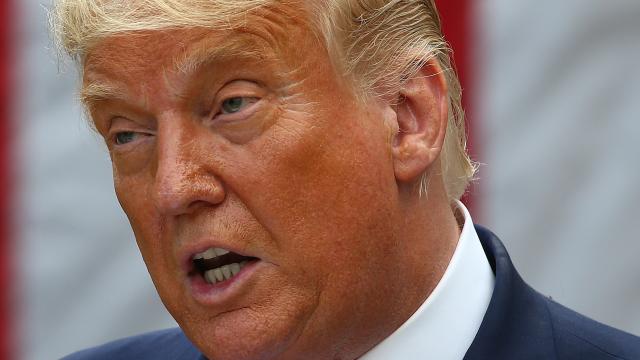With 36 days to go until the next presidential election, we’re being reminded that there are still a lot of unanswered questions about the 2016 campaign. Questions like how did the Trump team use all that data that was taken from Facebook users without their consent? A new investigation from Channel 4 News reveals that, in part, the voter data was employed to target Black voters with ads designed to discourage voting.
On Monday, Channel 4 published a report detailing some of its findings after it exclusively obtained a copy of the Trump campaign’s voter database. According to the report, the database consists of granular information on almost 200 million American voters. In all, the database has a file size of 5 terabytes. The files contained information on American individuals like occupation, address, race, and annual income. In 16 battleground states, the leak shows that voters were divided into eight categories based on their value or threat to the Trump campaign with labels like “Core Clinton” if they were a likely Hillary Clinton voter or “GOTV” if they were a likely Trump voter who needed to be pushed to make it to the polls.
[referenced id=”1048515″ url=”https://gizmodo.com.au/2017/06/gop-data-firm-accidentally-leaks-personal-details-of-nearly-200-million-american-voters/” thumb=”https://gizmodo.com.au/wp-content/uploads/2017/06/19/qxgssjdy1mfzvfejbujn-300×169.jpg” title=”GOP Data Firm Accidentally Leaks Personal Details Of Nearly 200 Million American Voters” excerpt=”Political data gathered on more than 198 million US citizens was exposed this month after a marketing firm contracted by the Republican National Committee stored internal documents on a publicly accessible Amazon server.”]
But the category that caught Channel 4’s attention was labelled “Deterrence.” This group of voters was reportedly targeted with social media ads designed to make them want to sit out the election entirely. These voters were disproportionately Black. From Channel 4:
In total, 3.5 million Black Americans were marked ‘Deterrence’.
In Georgia, despite Black people constituting 32% of the population, they made up 61% of the ‘Deterrence’ category. In North Carolina, Black people are 22% of the population but were 46% of ‘Deterrence’. In Wisconsin, Black people constitute just 5.4% of the population but made up 17% of ‘Deterrence’.
The disproportionate categorising of Black Americans for ‘Deterrence’ is seen across the US. Overall, people of colour labelled as Black, Hispanic, Asian and ‘Other’ groups made up 54% of the ‘Deterrence’ category. In contrast, other categories of voters the campaign wished to attract were overwhelmingly white.
What does deterrence mean in action? That’s a good question. Today, Facebook offers an ad library for referencing political ads that have run on the platform. But in 2016, that project didn’t exist because Facebook hadn’t yet gone through the gauntlet of public outrage that the Cambridge Analytica scandal and Trump election would eventually inspire. One document in the leak did show that African American voters were targeted with the infamous “Superpredators” video. The campaign reportedly spent $US55,000 ($77,864) on Facebook pushing the clip to Americans that it wanted to deter from voting in Georgia. In all, the Trump campaign spent $US44 ($62) million on Facebook advertising — almost twice as much as the Clinton campaign.
It’s totally impossible to say if these tactics were effective. The 2016 election was the first time in 20 years that Black voter turnout declined. But that could be chalked up to the weakness of the candidate, presumption that Clinton would win, or a range of other factors.
That doesn’t make it any less unnerving that social media has made it possible for a political campaign to parse a mountain of data on a mindboggling number of people in order to craft highly specific ads. In total, the Trump campaign reportedly served 6 million different versions of its targeted ads. In the end, Trump pulled off an Electoral College victory that came down to somewhere around 80,000 votes. That narrow margin of victory has made it easy to imagine that obscure election strategies could have made a big difference.
Facebook did not immediately respond to our request for comment, but a spokesperson for the social media network told Channel 4 that this is all just a bunch of old stuff that’s not a problem anymore. “Since 2016, elections have changed and so has Facebook – what happened with Cambridge Analytica couldn’t happen today,” the spokesperson said. “We also have rules prohibiting voter suppression and are running the largest voter information campaign in American history.” It’s ok everyone, Facebook has rules.
Channel 4 spoke with many voters whose information appeared in the database leak to get their reactions, and you can see the full video report here.
